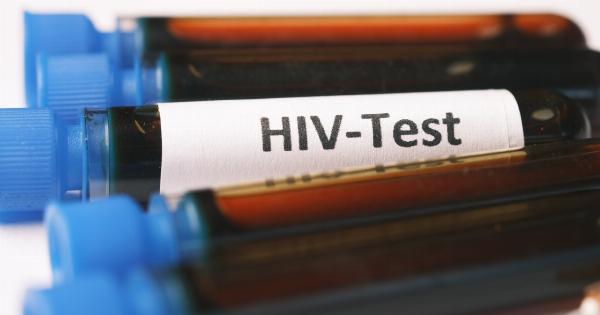HIV (Human Immunodeficiency Virus) is a global health crisis that has affected millions of people worldwide.
While significant advancements have been made in the treatment and prevention of HIV, infants born to HIV-positive mothers continue to face a heightened risk of acquiring the virus. However, recent breakthroughs in medical research have led to a revolutionary treatment for HIV-positive infants, offering newfound hope in the fight against this devastating disease.
Understanding HIV Transmission in Infants
Transmission of HIV from mother to child can occur during pregnancy, childbirth, or breastfeeding. Without proper intervention, approximately one-third of infants born to HIV-positive mothers will become infected with the virus.
This early and lifelong exposure poses significant health risks and necessitates urgent and effective treatment.
Challenges in Treating HIV-Positive Infants
Treating HIV-positive infants poses several unique challenges. Firstly, the immature immune systems of infants make it harder to control viral replication and limit the progression of the disease.
Secondly, administering antiretroviral therapy (ART) to infants is complex and requires careful dosing, as their bodies metabolize drugs differently than adults. Additionally, adherence to treatment regimens can be difficult for caregivers, further complicating the management of the disease in infants.
Promising Breakthrough: Early Initiation of ART
Recent studies have shown that initiating antiretroviral therapy in HIV-positive infants as early as possible can significantly improve their health outcomes.
This groundbreaking approach, known as early ART, involves starting treatment within weeks of birth, even before confirmation of the infection status through standard testing procedures. Early ART aims to limit the viral reservoir, reduce viral replication, and preserve the immune function of the infant.
Effectiveness of Early ART
A number of clinical trials and observational studies have provided compelling evidence for the effectiveness of early ART in HIV-positive infants.
These studies have demonstrated a substantial reduction in HIV-related mortality and morbidity rates in infants who received early treatment compared to those who initiated therapy at a later stage. Moreover, early ART has been associated with better immunological outcomes, decreased viral resistance, and improved neurodevelopmental outcomes among HIV-positive infants.
Challenges in Implementing Early ART
While the benefits of early ART are evident, several obstacles must be overcome to ensure widespread implementation.
Early identification of infected infants remains a crucial challenge, as traditional diagnostic methods may not yield accurate results during the early stages of infection. In resource-limited settings, accessibility to diagnostic tests and antiretroviral drugs may be limited, hindering the prompt initiation of treatment.
Furthermore, healthcare providers must receive adequate training and support to effectively manage early ART and address potential medication-related issues.
Collaborative Efforts and Global Initiatives
Combatting HIV in infants requires multi-faceted approaches and global collaboration.
International organizations, governments, and non-profit entities are working together to develop strategies for early identification, promote access to diagnostic tools, and ensure affordable availability of antiretroviral drugs. Additionally, research and funding initiatives are focused on optimizing treatment regimens, reducing drug toxicity, and evaluating the long-term effects of early ART on the health of HIV-positive infants.
Supporting Caregivers in HIV Management
The successful implementation of early ART in HIV-positive infants heavily relies on the support and education of caregivers.
Parents, guardians, and healthcare providers need comprehensive guidance on treatment adherence, potential side effects, and the importance of regular follow-ups. Additionally, mental health resources should be made readily available to address the emotional and psychological impact of caring for an HIV-positive child.
Expanding Access to Treatment
To achieve the goal of eliminating HIV in infants, efforts must be focused on expanding access to treatment and prevention services globally.
This includes strengthening healthcare infrastructures, increasing investment in research and development, and advocating for policy changes that prioritize the health and well-being of HIV-positive infants. By addressing barriers to care, such as stigma, discrimination, and social inequities, progress can be made towards eradicating HIV transmission in infants.
Conclusion
Revolutionary treatments like early ART offer immense hope in the battle against HIV transmission in infants.
By promptly initiating antiretroviral therapy and addressing the unique challenges faced in treating HIV-positive infants, we can significantly improve health outcomes and reduce the burden of this devastating disease. Collaboration, education, and expanded access to treatment are vital in ensuring a future where no infants need to suffer from HIV.





























